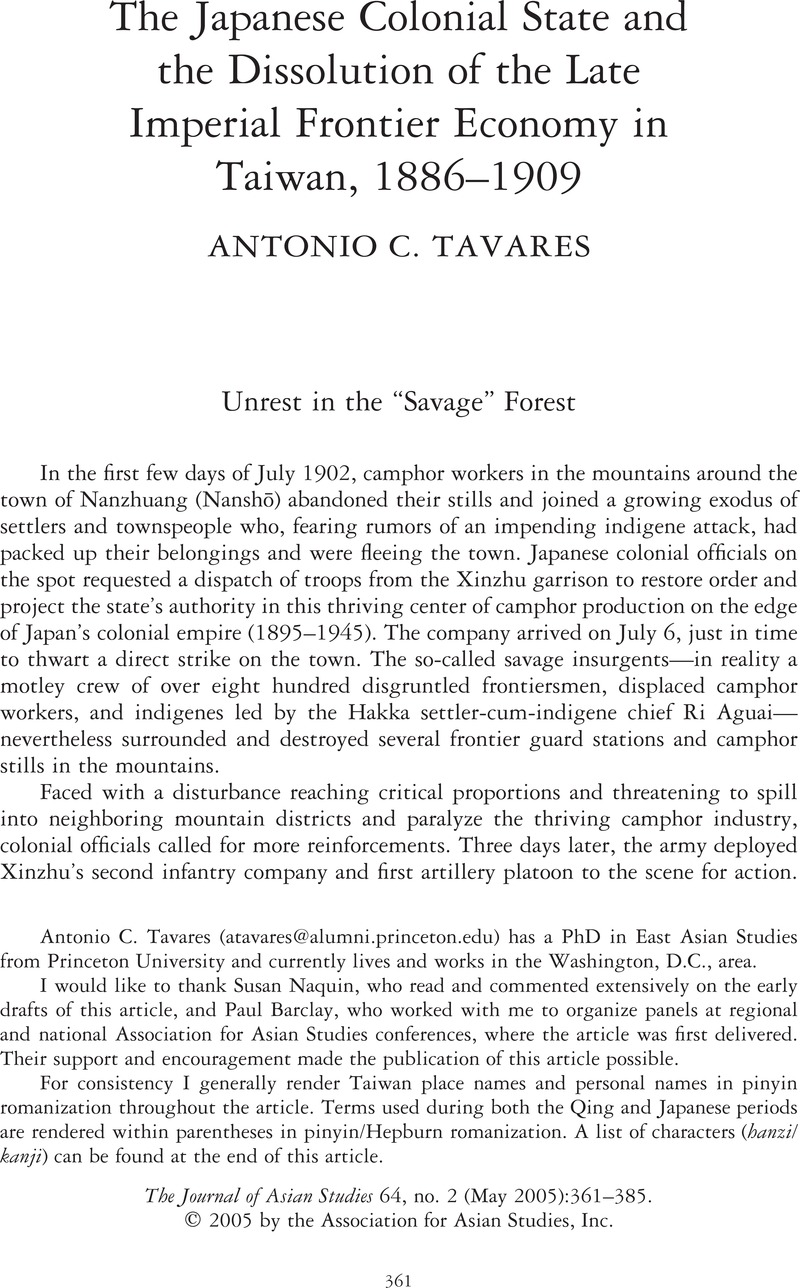Crossref Citations
This article has been cited by the following publications. This list is generated based on data provided by Crossref.
Katz, Paul R.
2005.
Governmentality and Its Consequences in Colonial Taiwan: A Case Study of the Ta-pa-ni Incident of 1915.
The Journal of Asian Studies,
Vol. 64,
Issue. 2,
p.
387.
Eskildsen, Robert
2005.
Taiwan: A Periphery in Search of a Narrative.
The Journal of Asian Studies,
Vol. 64,
Issue. 2,
p.
281.
Hipsher, Scott A.
Hansanti, Songporn
and
Pomsuwan, Suthinan
2007.
The Nature of Asian Firms.
p.
33.
Hellyer, Robert
2013.
The West, the East, and the insular middle: trading systems, demand, and labour in the integration of the Pacific, 1750–1875.
Journal of Global History,
Vol. 8,
Issue. 3,
p.
391.
Ho, Chih-hsing
2017.
Rethinking Informed Consent in Biobanking and Biomedical Research: a Taiwanese Aboriginal Perspective and the Implementation of Group Consultation.
Asian Bioethics Review,
Vol. 9,
Issue. 4,
p.
353.
Templeman, Kharis
2018.
When Do Electoral Quotas Advance Indigenous Representation?: Evidence from the Taiwanese Legislature.
Ethnopolitics,
Vol. 17,
Issue. 5,
p.
461.
Hirano, Katsuya
Veracini, Lorenzo
and
Roy, Toulouse-Antonin
2018.
Vanishing natives and Taiwan’s settler-colonial unconsciousness.
Critical Asian Studies,
Vol. 50,
Issue. 2,
p.
196.
Roy, Toulouse Antonin
2019.
“The Camphor Question Is in Reality the Savage Question”: Indigenous Pacification and the Transition to Capitalism in the Taiwan Borderlands (1895–1915).
Critical Historical Studies,
Vol. 6,
Issue. 1,
p.
125.
HUNG, LI-WAN
2020.
Ethnic Conflicts in Hillside Borderlands. A study on headhunting in eighteenth- and nineteenth-century Taiwan.
Modern Asian Studies,
Vol. 54,
Issue. 1,
p.
30.
Roy, Toulouse Antonin
2022.
War in the camphor zone: Indigenous resistance to colonial capitalism in upland Taiwan, 1895–1915.
Japan Forum,
Vol. 34,
Issue. 3,
p.
333.





 [Report on the Investigation of Customs of the Savage Peoples]. Vol. 3.
[Report on the Investigation of Customs of the Savage Peoples]. Vol. 3.  .
.  [Report of the Bureau of Production].
[Report of the Bureau of Production].  [A History of Miaoli's Development].
[A History of Miaoli's Development].  .
.  .
.  .
.  [Selection of Taiwan Historical Essays], ed.
[Selection of Taiwan Historical Essays], ed. 